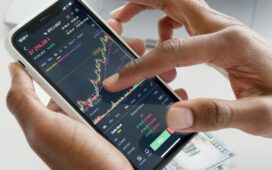By Paul A. Merriman
Timing the market is a recipe for failure. Do this instead.
Of all the complaints I hear from investors, one of the most frequent is some variation of “I don’t think I’m getting the return I should be getting.”
And when I dig into this topic with people one-on-one, I usually discover one of two reasons for this – or both.
First, many investors have no realistic idea what they should expect from their portfolios. They just know they want more.Second, very often they have turned their portfolios over to people (and companies) that are essentially charging high prices to make bets with their money.
We’ll come back to that first item, but our focus now is the second.
The culprit is active management, based on the idea that educated, intelligent people who work hard can outsmart the market by choosing which stocks to invest in and deciding when to buy and sell them.
It sounds like common sense. But in real life it rarely works.
Many people would like to invest in “the next Microsoft (MSFT).” But following that hope is one of the biggest mistakes you can make.
In 1986, there were tens of thousands of public companies whose stock you could have bought. One of them was Microsoft, a very small firm headed by a geeky Harvard dropout who talked in technical jargon that few people could understand.
Looking back, do you wish you had bet your life savings on this tiny company back then? Do you wish you had a chance, right now, to get in on the ground floor of whatever will turn out to be a huge winner 10 or 20 or 30 years from now?
If so, you could become a victim of one of Wall Street’s most profitable niches: active management.
Hundreds of mutual funds and thousands of managers are eager to take your money on the hope (and that’s really all it is) that they can produce great returns.
There’s a much better alternative: low-cost index funds, which aim to give you the returns of the market.
If you choose active management instead, it’s likely to cost you much more than you realize.
Read: Forget about your retirement portfolio beating inflation over the next 10 years
You lose the moment you start
Actively managed funds are sold, not bought. Most investors learn about them from financial professionals who, in one way or another, earn commissions from selling them. Often, but not always, investors pay upfront sales commissions of 5.75%.
You might think you’re investing $10,000. But in fact the sales commission means you take a $575 loss the first day you own the fund. You have actually invested only $9,425 in the fund.
Only after a gain of 6.1% would your account be worth your original $10,000.
In almost all cases, you can buy index funds without paying a commission.
My rule of thumb is that a difference of 0.5% in return can easily cost an investor $1 million over a lifetime.
The $575 sales commission means that every year, for as long as you own that fund, you’ll get 0.575% less return than if you had invested $10,000 in the same assets that are in the fund itself – in other words if you hadn’t paid that commission.
You pay more every day
Most of the people I talk to seem to care about their money. They aren’t likely to willingly pay $1,000 for something they could easily get elsewhere for much less.
Yet investors in actively managed funds pay unnecessarily high costs every day. Operating expenses of these funds are at least 0.5% higher than those of index funds. That means lower returns. There goes another $1 million, at least.
You might pay higher taxes
If you invest in a taxable account (not a 401(k) or an IRA), you’ll be taxed every year on the dividends and capital gains earned within your funds, whether or not you receive those earnings in cash. You could think of this as a tax drag.
Vanguard’s 500 Index Fund, according to Morningstar, has a tax drag of 0.34%. The average actively managed fund’s comparable number is 1.49%.
There goes another $2 million.
Your fund is likely to underperform
The reason to hire an active manager, of course, is to get the services of somebody (or more likely a team) good at picking stocks and knowing when to buy or sell them.
Most of the time, it doesn’t work out.
Twice a year, S&P Dow Jones Indices publishes a comparison of the performance of actively managed funds against their benchmarks.
Here are three main conclusions from the 2023 year-end report:
Most actively managed funds continued to underperform their benchmark indexes, a trend that’s been consistent for more than 20 years.Over longer periods, the percentage of active funds that underperform their benchmarks generally increases.Active funds that outperform their benchmarks rarely keep doing so in subsequent periods.
Specifically, as of the end of 2023, nearly 85% of all domestic mutual funds underperformed their benchmarks over five years. The failure percentage rate rose to 91.4% over 10 years and 94% over 20 years.
Only one in four large-cap core funds managed a 20-year return of at least 9.47%, a period in which the S&P 500 returned 9.69%.
Success doesn’t last
Some active managers build impressive track records. A case that’s well known to investors in the 1990s is that of Bill Miller. His Legg Mason Value Trust fund beat the market 15 years in a row, gradually attracting billions of dollars from investors who wanted in on this gravy train.
Then a funny thing (but not surprising to the academics) happened: Over the next 10 years, Legg Mason Value Trust landed in the BOTTOM 1% of all funds.
According to the Dow Jones Indices report, of the 804 large-cap funds in existence at the end of 2003, nearly 70% were gone by the end of last year. Had they produced good returns, they would most likely have survived.
You will be disillusioned
At some point you may notice you’re not getting the returns you wanted. If you’re relying on a salesperson to guide you, he or she may suggest a different actively managed fund.
The pattern – hope followed by disappointment – is likely to bring you back to the same place, perhaps with still another 5.75% sales commission.
Alternatively, you may simply sell your funds and put your money in cash until you figure out what’s next. That’s a recipe for trouble.
Study after study of investor behavior points to the same conclusion: Long-term investment results are best achieved by staying the course rather than trying to time the market.
At the start of this article, I said most investors have no realistic idea of what they should expect from their portfolios. To my mind, the answer is fairly clear.
Over time, you should expect the equity part of your portfolio to perform in line with the asset classes in which you invest. If your focus is on the large-cap blend stocks like those in the S&P 500 SPX, then that’s historically around 10%. If you diversify beyond that index, you should expect somewhat more, though certainly not every year.
Very few actively managed funds will give you that. The combination of sales commissions, operating expenses, trading costs, poor timing decisions, bad stock selection and taxes can cost you 3% to 5% a year in returns.
That’s the bad news. The good news is that you can easily build a portfolio of low-cost index funds suited to your own needs and risk tolerance. I gave details in this recent article.
For more on this topic, check out the most popular podcast I’ve ever recorded, “Could this be the No. 1 reason to use index funds?”
Richard Buck contributed to this article.
Paul Merriman and Richard Buck are the authors of “We’re Talking Millions! 12 Simple Ways to Supercharge Your Retirement.”
-Paul A. Merriman
This content was created by MarketWatch, which is operated by Dow Jones & Co. MarketWatch is published independently from Dow Jones Newswires and The Wall Street Journal.
(END) Dow Jones Newswires
07-06-24 1151ET
Copyright (c) 2024 Dow Jones & Company, Inc.




